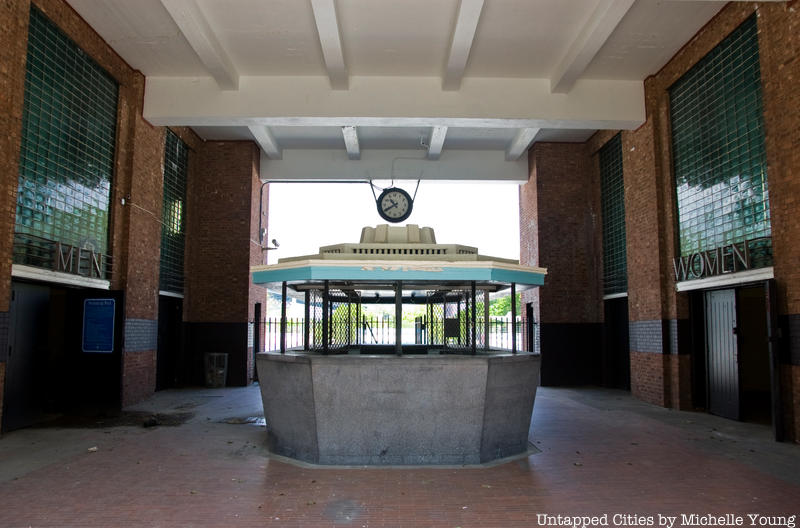2. New York City’s Public Swimming Pools


To understand the importance of the city’s network of public swimming pools, it’s essential to look back at the history of baths as a public health initiative in New York City. The public bathhouse and floating baths in the city’s rivers, initiatives during the City Beautiful movement when indoor plumbing was still a luxury, firmly established the government’s role in providing places to bathe and swim.
In the 1930s and ’40s, the Department of Parks in New York City was given jurisdiction over city bathhouses and the agency “harnessed Works Progress Administration labor to develop a series of outdoor pools for the city,” describes the New York City Department of Parks & Recreation today.
In 1936, 11 pools were opened by Robert Moses, Parks Commissioner, and Mayor Fiorello LaGuardia. In total, Moses oversaw the construction and opening of 23 public pools and bathhouses. Some of the WPA-era pools and accompanying buildings are landmarks, including the Art Moderne-style Tompkinsville Pool Bath House in Staten Island and the Sunset Play Center Bathhouse in Sunset Park, Brooklyn. Others, including the Astoria Pool, the largest in New York City, are not landmarked but are noted for their cutting edge design. The Astoria Pool, with a backdrop of Moses’ cash cow creation, the Triborough Bridge, is an Olympic-standard size pool that can fit 3000 people.





